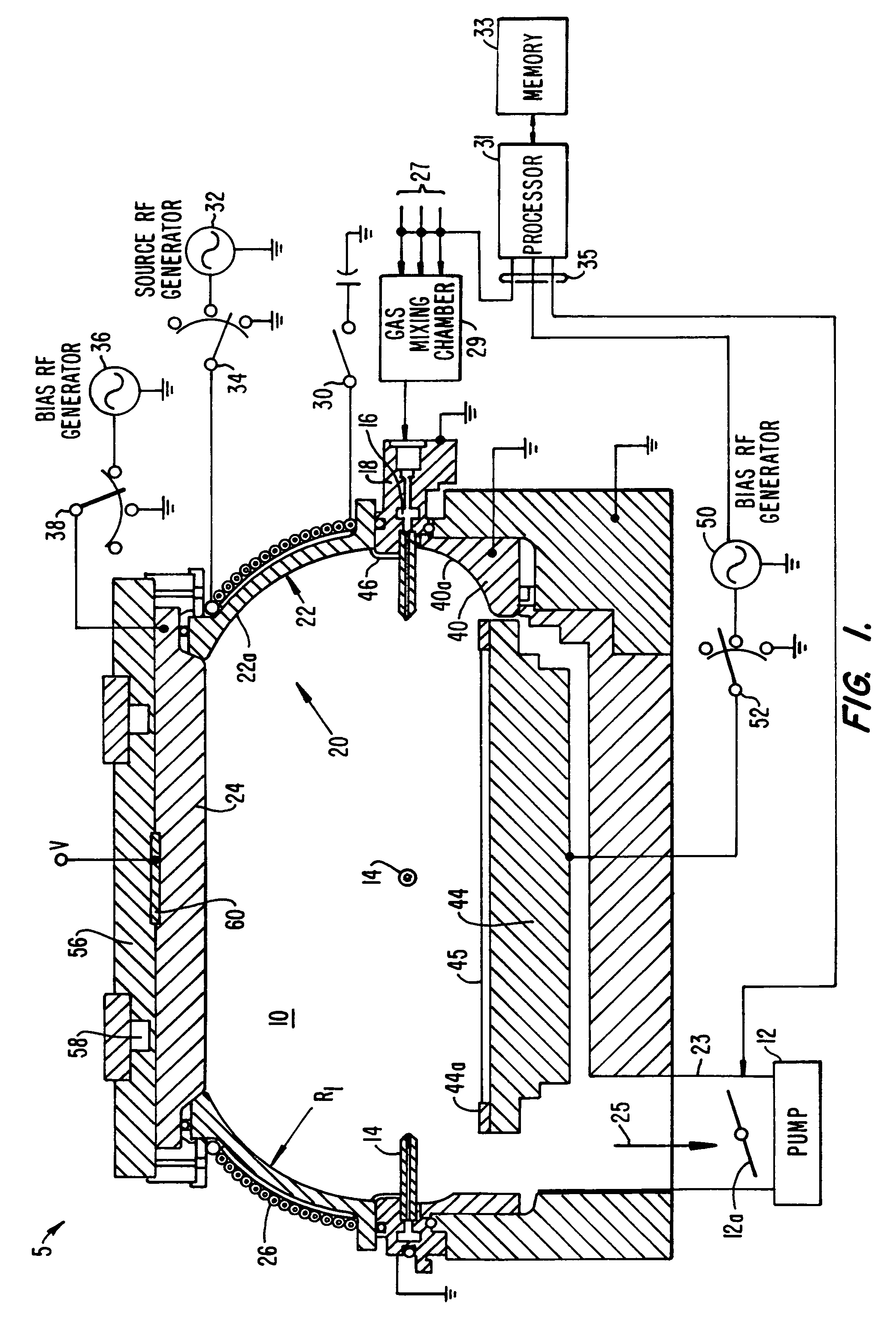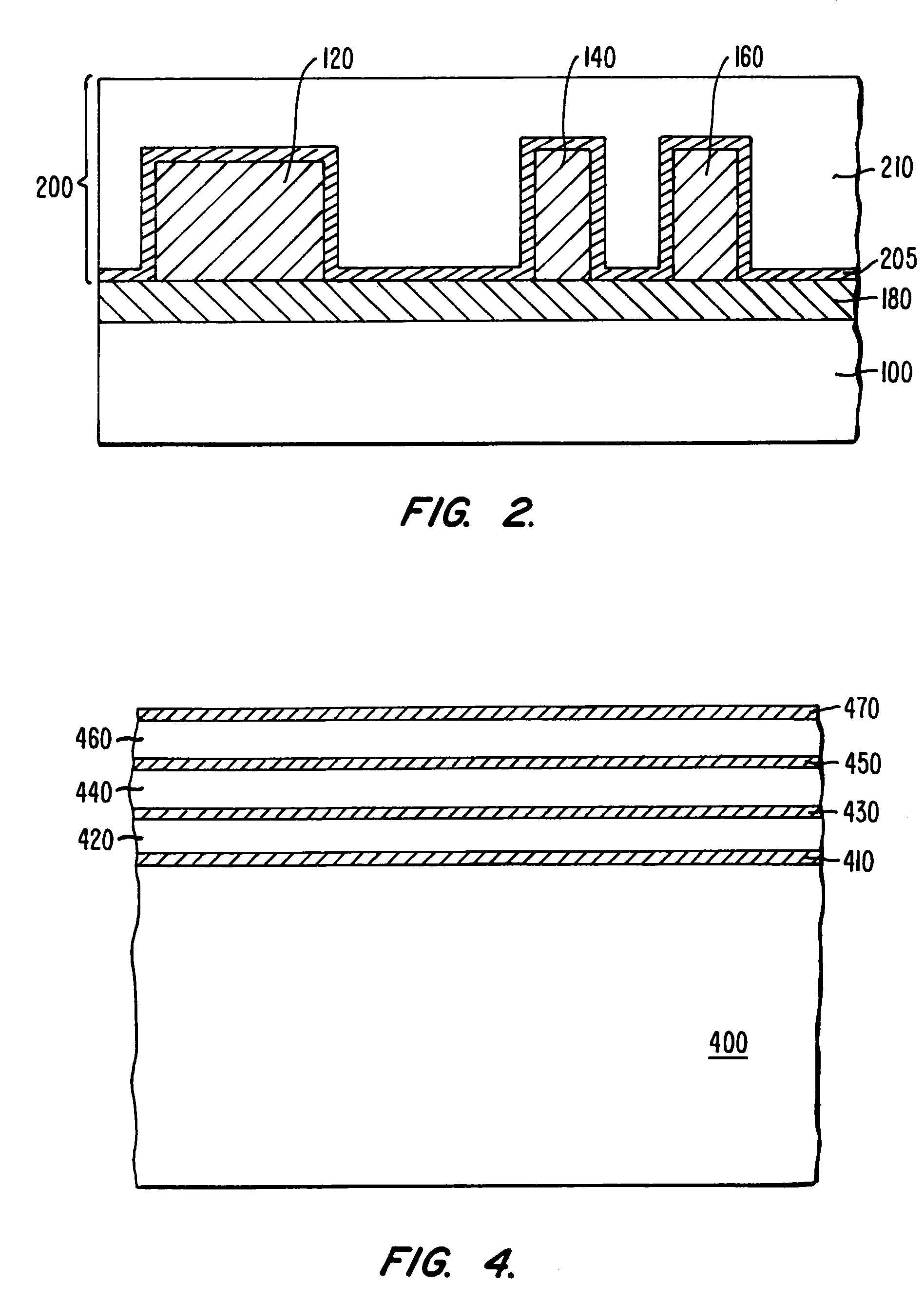Method for reducing the intrinsic stress of high density plasma films
a plasma film and intrinsic stress technology, applied in the direction of liquid surface applicators, chemical vapor deposition coatings, coatings, etc., can solve the problems of metal layers on device structures, substrate bowing or cracking, voids or other defects, narrow spaces or gaps, etc., to reduce the stress of films deposited, increase processing time, and reduce throughput
- Summary
- Abstract
- Description
- Claims
- Application Information
AI Technical Summary
Benefits of technology
Problems solved by technology
Method used
Image
Examples
Embodiment Construction
I. An Exemplary High Density Plasma CVD System
[0024]FIG. 1 illustrates one embodiment of an HDP-CVD system 5, capable of depositing a dielectric layer according to the present invention. HDP-CVD system 5 includes a vacuum chamber 10, a vacuum pump 12, a bias RF (BRF) generator 36, a BRF generator 50 and a source RF (SRF) generator 32.
[0025]Vacuum chamber 10 includes a ceiling 20 consisting of a sidewall 22 and a disk-shaped ceiling electrode 24. Sidewall 22 is made of an insulator such as quartz or ceramic and supports coiled antenna 26. The structural details of coiled antenna 26 are disclosed in U.S. patent application Ser. No. 08 / 113,776 entitled “High Density Plasma CVD and Etching Reactor,” by Fairbain and Nowak, filed Aug. 27, 1993, the disclosure of which is incorporated herein by reference.
[0026]Deposition gases and liquids are supplied through lines 27, having control valves (not shown), into a gas mixing chamber 29 where they are combined and sent to a gas supply ring mani...
PUM
| Property | Measurement | Unit |
|---|---|---|
| feature sizes | aaaaa | aaaaa |
| feature sizes | aaaaa | aaaaa |
| thickness | aaaaa | aaaaa |
Abstract
Description
Claims
Application Information
 Login to View More
Login to View More - R&D
- Intellectual Property
- Life Sciences
- Materials
- Tech Scout
- Unparalleled Data Quality
- Higher Quality Content
- 60% Fewer Hallucinations
Browse by: Latest US Patents, China's latest patents, Technical Efficacy Thesaurus, Application Domain, Technology Topic, Popular Technical Reports.
© 2025 PatSnap. All rights reserved.Legal|Privacy policy|Modern Slavery Act Transparency Statement|Sitemap|About US| Contact US: help@patsnap.com



